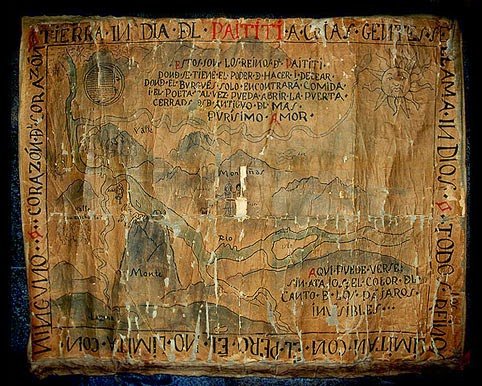The Lost City Of Gold: The Legendary Inca City That Was Never Found
Somewhere in the depths of far eastern Peru lies Paititi, a legendary Inca city that has been lost to mankind for centuries. The Inca’s purportedly hid their treasure in this hidden city, to keep it safe from the frequently invading Spaniards.
Is Paititi just a legend or another real city hiding in the jungle just waiting to be found?
Paititi is certainly the stuff legends are made of, just like the Greek city of Troy, which was just a story until Heinrich Schliemann, the German archaeologist discovered it. The amazing city of Petra in Jordan was only introduced to the world at large in 1812, found by a Swiss explorer. Until then it had remained desolate and abandoned in the desert after an earthquake had devastated several of its buildings and all but destroyed its infrastructure. Machu Picchu itself was an astonishing 20th Century discovery.
Possible locations of Paititi
The word ‘Paititi’ in Quechuan means ‘Home of the Jaguar Father’. The Quechuan’s were descendants of the Inca’s and have told many stories over the years of the Inca’s troubles with the invading Conquistadores, hiding away their impressive hoards of gold, silver and gems before fleeing their lands in droves.
Archaeologists speculate that the city may lie in south-eastern Peru, secluded and hidden by heavy jungle. Other ideas include thoughts that it may be found across the border in Brazil or perhaps in north-western Bolivia.
In its time, Paititi was said to be a thriving city, located behind the shelter of mountains in a place with many running waterfalls.
The Spanish/Inca war lasted virtually 40 years and it was in 1572 that Spain finally managed to quell the Incas and take their last city Vilcabamba. After the Spaniards took the city, the stories about the Paititi grew. Many people have for centuries tried to find this city, but for hundreds of years not a shred of evidence was found. The 20th Century saw a rise in treasure hunters trekking through the Andes and whilst some had claimed victory, no satisfactory proof was provided to credit them with it.
Missionary Andrea Lopez described in a Jesuit document a large city rich in gold, silver and precious gems. Written at some point in the 1600’s the document may confirm the existence of Paititi and also claims that it was hidden in rainforests and decorated by waterfalls.
Whilst this document was presented in detail to Pope Clement XIII, the Vatican has kept the location of the city a secret, if indeed it was included in the document, to this day.
Are there any other facts behind the fiction?
The Francisco Pizarro-led Spanish occupation of the Inca cities and their capture of Atahualpa, the last Sapa Inca, saw a trail of Inca’s carrying a heavy load of gold for his release. No-one ever found the source of this gold.
The Andes is well-known for its richness in gold, silver and precious gem mining.
The Conquistadores were well known for their brutality and greed causing the Inca’s to immediately hide all their precious resources.
The Spanish omitted to document some of areas they had come across, including Machu Picchu, which is reason enough to suspect there are other cities hidden out there somewhere.
Paititi is said to be situated in an area of heavy, dense jungle and would be completely hidden from view, even more so now that jungle lianas and wilderness have now probably covered up all entrance points to the city.
December 29th, 2007, saw members of the local community of Kimbiri, Peru celebrating the find of large sandstone structures which resembled high walls. These covered an area of 40,000 square meters and it has been considered that these formations could have protected the city of Paititi.
Many other historically documented sources of the Colonial period (16th - 18th centuries) refer to possible locations of Paititi and to subsequent expeditions that went searching for it. Some of the more informative documents were written by:
• Juan Álvarez Maldonado (1570)
• Gregorio Bolívar (1621)
• Juan Recio de León (1623–27)
• Juan de Ojeda (1676)
• Diego de Eguiluz (1696)
For treasure hunters and archaeologists everywhere, Paititi if true, would be a find of truly magnificent proportions.
Sources
- http://www.rediscovermachupicchu.com/paititi.htm
- https://www.forbes.com/sites/jimdobson/2016/01/11/move-over-machu-picchu-the-discovery-of-paititi-the-secret-city-of-gold-may-change-peru-forever/
- https://en.wikipedia.org/wiki/Paititi
Posted with STEMGeeks


A very interesting article. Our history has its mysteries and secrets which have not yet been fully revealed.
Congratulations @ermola! You have completed the following achievement on the Hive blockchain and have been rewarded with new badge(s) :
You can view your badges on your board and compare yourself to others in the Ranking
If you no longer want to receive notifications, reply to this comment with the word
STOPDo not miss the last post from @hivebuzz: